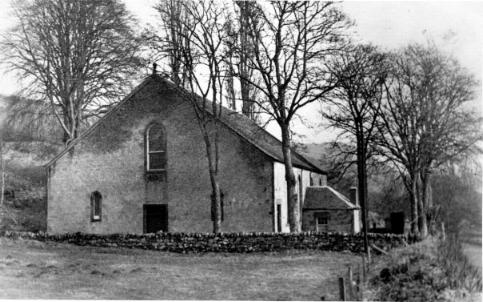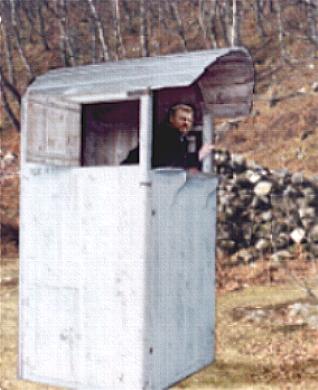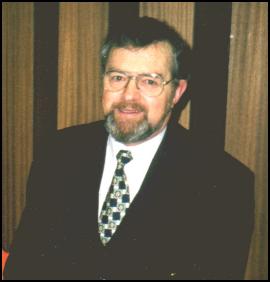
undefined
undefined
THE FREE CHURCH OF SCOTLAND
In Glen Urquhart most of the community supported the Disruption
and erected the church and the manse in 1847. In 1900 the minister
and most of the congregation joined the Union. However, all the
elders and many of the congregation had returned to the Free
Church by 1903. The church was destroyed by fire in 1956 and
rebuilt shortly after on a much smaller scale. Glen Urquhart: Church located at Oakbank, Milton, 1 mile west of
Drumnadrochit on A831 Cannich Road.

The above photo of the Church before the fire was graciously sent to me by Rev. Ian Allan,
author of "West the Glen".
Story of The Free Church of Scotland (in brief)by Rev. Ian Allen
This church was built in 1844 by the people of the Glen. The story behind the building of the church is common to many Highland communities of the time, when the "Disruption" took place. It was a most heart-warming story. Briefly at the centre of the story is a spiritual movement that was taking place throughout Scotland. This movement meant that people became very aware that the men in the pulpit and ruling over them in spiritual matters (their ministers) ought to be men who believed in, and preached from, the Bible. However the predominant church in Scotland was the Church of Scotland, and in many places the men who occupied the pulpit were not at all interested in the specifics of Bible teaching. Indeed their life styles were far from commending Bible teaching.
Going further back in history, when the Church of Scotland came into being after the Reformation (around 1560), a vital part of its constitution involved the recognition that the congregation choose their own minister (nowadays we would simply call this democracy). So when congregations became vacant (the minister moved away or died), they then would be in a position to invite a new minister to take over the parish (congregation). However another "player" had come into the picture, this was the local landowner, (or heritors as they were then called). They had gradually come to be very involved in the choosing of ministers and would present Rev "So and so" to be the minister, and quite often in the distant past this was no problem to the people. But with the new spiritual awareness things had changed. The ordinary people felt strongly that the man in the pulpit should be a man of the "Book". The Heritors had little sympathy with this. The time inevitably came when there were clear conflicts of interest. The answer of the heritors was to demand the imposition of their minister upon the congregation.
In many places in Scotland similar events were going on: The local congregation wanted an evangelical man, the land owners wanted their own man - non evangelical. The land owners brought in civil law when in some places the local congregation put their own man in despite the complaints of the land owners. So the state, or government of the land was now demanding that it’s will be accepted in an area in which the constitution of the church regarded as its own divine prerogative. That is to say that the civil authorities were intruding into the spiritual life of the church. Indeed the choosing a minister was a most important spiritual matter. What complicated the issue was that the heritors , and the state helped with the funding of the church. The only answer that the congregations had to this state interference, was to think of breaking away from the main body of the Church of Scotland; that would give them independence and prevent interference, but it would mean that the people would have to build their own churches, pay their own ministers out of their own pockets. For the ministers who were weighing these matters up there was much to be sacrificed. They were going to have to leave homes and security and be faced with the greatest test of their faith.
Many in the land and in government did not think that these ministers had the courage for such a move. But in 1843 over 600 ministers left the Church of Scotland and became known as the Church of Scotland Free - later “The Free Church of Scotland” The “Free” being free of state interference.

The story of local congregations and how they responded to the challenge can be read about in an old book “The Annuls of the Disruption”. Many congregations found that they were not allowed land on which to build church or manse, and great hardships were endured. Some had to worship in the open air. (See Picture of Preaching Booth)
In the Glen, the church you see was built by local effort and money. This is why many of the Free Churches in the Highlands were not great architectural achievements or monuments. The buildings were erected by a people who wanted to worship God simply and humbly, to hear the Word of God, and to meet in relative warmth and safety. The interesting story of the Glen Church can be found in “West The Glen”.

IAN ALLAN - e-mail: IAllan2656@aol.com
THE FREE CHURCH OF SCOTLAND
WEST THE GLEN
 Back to MacLean - Campbell Connection
Back to MacLean - Campbell Connection



 Back to MacLean - Campbell Connection
Back to MacLean - Campbell Connection